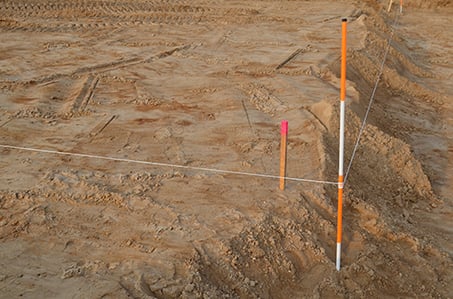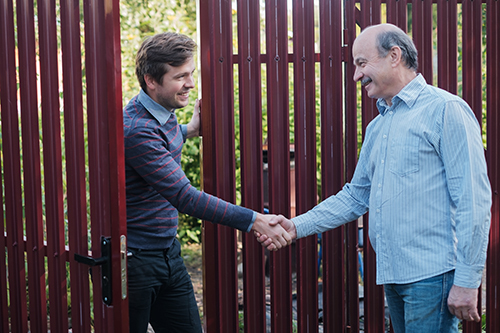How Close Can You Install a Fence to Your Property Line
Fence Etiquette: Tips to Avoid Neighbor Disputes
One of the biggest considerations to make when planning a fence project is to determine the fencing area for a proper fence installment.
How close you can install a fence to your property line depends on a few factors, including the regulations in the area where you live and your neighbor’s opinion on the fence. Knowing and following your area’s fence regulations, as well as practicing neighbor etiquette are key to a successful fence installment and avoiding any future fence disputes. Here is what you need to know about fence placement before starting a fence installation on your property.
-
Determine Boundaries
To properly determine your property lines, you need to study your house line drawing or plot. You may have received a copy when purchasing the property, or your county deed may provide one. If the copy isn’t available, it’s best to request a new survey from a land surveyor to make sure you’re not going over your property lines. This may cost you anywhere from $500 to $1,000 from a qualified surveyor, but will save you much more in the long run considering the cost of rebuilding a fence or addressing fence disputes in court with your neighbors.
-
Check Rules and Regulations
How far back a fence needs to be installed on your property also depends on regulations set by your area’s jurisdiction. Your homeowner’s association (HOA) can set restrictions and guidelines for how far a fence can be installed, its style and height, views and visibility. It’s important to pay attention to HOA guidelines as they can impose serious fines and penalties on the homeowner, affecting the future value of the property.
Typically, fences are installed anywhere from 2 to 8 inches from a property line in most areas. Some areas might allow to go right up to a property line, especially if you live in an urban row house where every inch makes a difference!
Bear in mind, however, that when a fence is placed a few inches inside a property line, you are still responsible for the part outside your fence that still belongs to you. This means that making sure the grass is cut and the weeds are pulled are your responsibility—and not your neighbor’s!
In cases when a fence is built directly on the property line, the responsibility may be shared between you and your neighbor. If both of you are thrilled about the idea of having a fence, that’s great—you can split the cost in half and agree on the maintenance arrangements. However, do not simply assume your neighbor will welcome the idea of having a fence, as that could cost you a legal dispute, and perhaps, rebuilding the fence. Have a conversation with your neighbors before installing a fence and share your plans; this will save you a fence dispute and ensure your fence lasts the term it’s supposed to.
-
Respect the Limits

Once you’ve checked out the regulations and guidelines, make sure to follow them. Respect the limits by reviewing them with your fence-installer company before setting up a fence. Fence-installing companies deal with installations on a regular basis, so they know the typical local zoning regulations for height, setbacks, and other protocols. Still, it’s a good practice to share all of your findings to ensure conformity to the rules. Usually, height limits are 6 feet for backyards and sides and 4 feet for front yards. If you have a valid reason for wanting an extra high structure, to block a view or noisy street, you can apply to your zoning board for a variance. In that case, neighbors can review and comment on your request during the variance hearing.
-
Consult with Experts
Before installing a fence, you might need to consult various authorities to ensure a valid fence placement, such as:
- Your realtor
- Local government representative
- HOA president
- Your neighbors
- Fence installation professional
This will inform you on how close to install a fence to your property line as well as what height, size, and material to choose for fencing your property. Keep in mind that after a fence is installed, it’s also important to maintain it on both sides and keep up with the requirements.
How AVO Can Help
At AVO, we deliver high-quality gates and fencing supplies to professional contractors throughout New England, and also provide the same high-quality fencing products directly to homeowners. It’s important to note that we do not install, but we work with homeowners in the design and planning of their fence projects—and are happy to provide a list of approved fence installers. Contact us today to get your fencing project started!

